
Music is not an office program, but a PC can be a modern tape recorder. For this there are PC4uMusic configurations, which can be inspired by the elegance of legendary Bang & Olufsen designs.Many tape recorders have been produced with this brand and were called Beocord , but they are not as famous in the world as their products, which are on permanent exhibition at the Museum of Modern Art in New York. Reel tape players were top class, which is natural considering Valdemar Poulsen's importance to magnetic recordings. Beocord 1600 was extremely flat with its all-mechanical solutions.with completely mechanical functions very flat. The 6000 was even better with its electronic design, but it remained a prototype as market demand changed. Later cassette decks with the same name were a bit difficult to understand from the users' perspective. The Beocord for hi-fi VHS cassettes was well thought out for its time, but its integration with the Beosystem proved too much of a challenge and undermined the company's very good reputation.
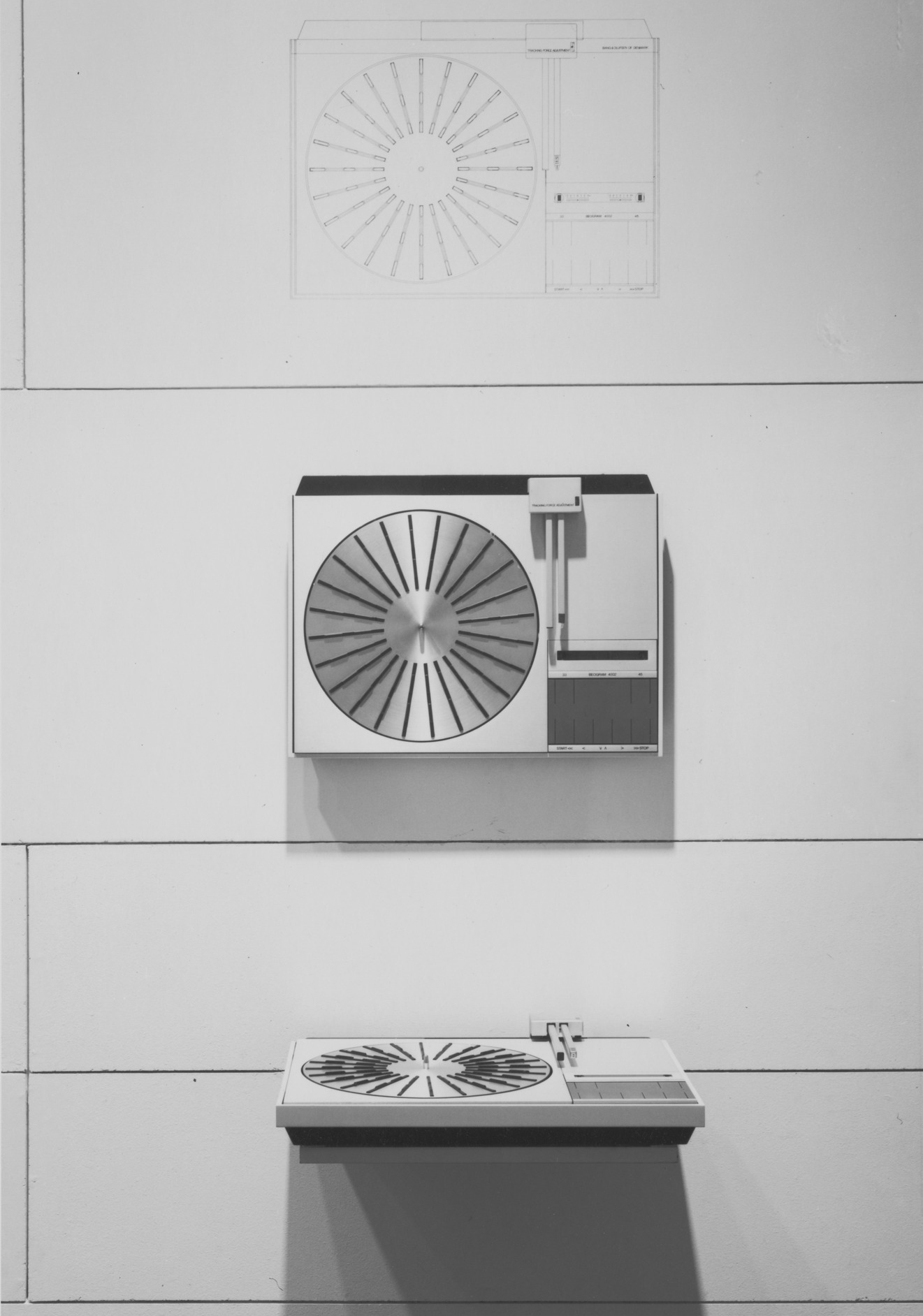
This brand has become known worldwide mostly due to their marketing department. The design was promoted and the technical quality of the products was less exposed. A good example is their player for vinyl records. All were called Beogram and have many phenomenal technical solutions. The name was also used for B&O's CD players, but it was mainly the design that distinguished them from other brands.
Beogram with tangietial arm is still one of the best turntables in the world. The needle in the disc groove moves exactly as it did when it was engraved. They can work hung vertically, which makes them more handy at home. LPs played only with them are usually still in very good condition.
B&O's own Moving Micro Cross pick-up can generate with Beogram a very faithful signal from vinyl records. This also applies to analog 4-channel recordings ( SQ , QS , CD-4 ). The Beogram 6000 had a built-in CD-4 decoder, which today is extremely rare. The naked contact line diamond needle in the MMC 6000 may still be in good condition. Unique recordings that have been released on vinyl can be digitized

Bang & Olufsen A/S was founded in 1925 by Peter Bang and Svend Olufsen . The company focused very early on design. It was a result of Peter Bang's visit to New York in 1924. Then a "musical furniture" was the most obvious offer. The illustration shows the anniversary model Master 506 RG , but already in 1934 the Hyperbo 5 RG Steel was offered with a modernist design.
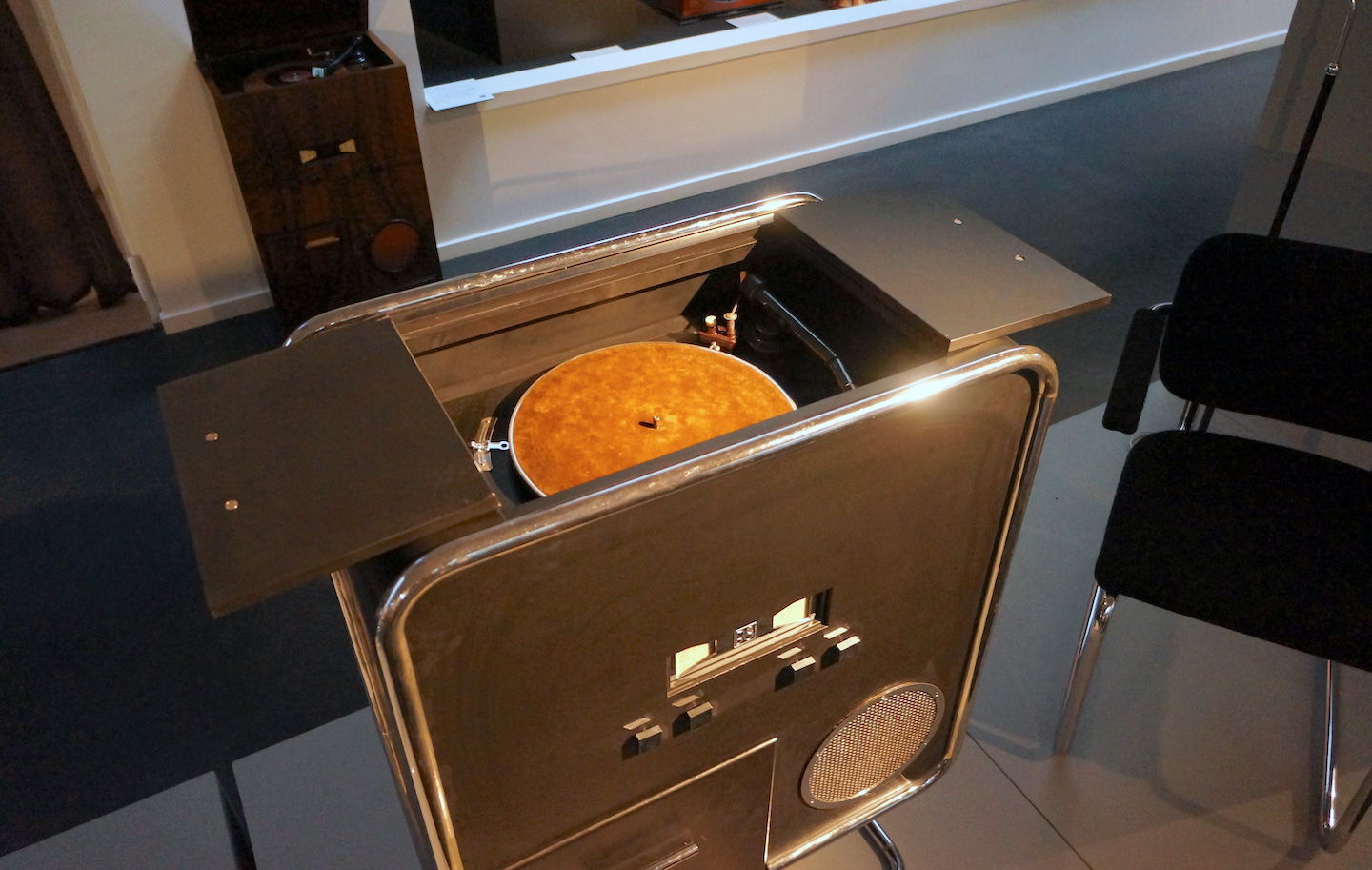
The Hyperbo 5 RG Staal, where the inspiration was drawn from one of the most significant BAUHAUS products: the "Cesca chair" designed by Marcel Breuer in 1928. You can see clear inspiration in the choice of materials and the design of simple lines in chrome-plated steel and chrome-plated steel and black lacquered wood.

In 1938, the Beolit 39 appeared - a very elegant tube radio with a housing made of the plastic material Bakelite, which was new in terms of design.

Later Beolit has been sold with the latest technical solutions and modern design. They have become portable radios and, in the 70s, extremely popular.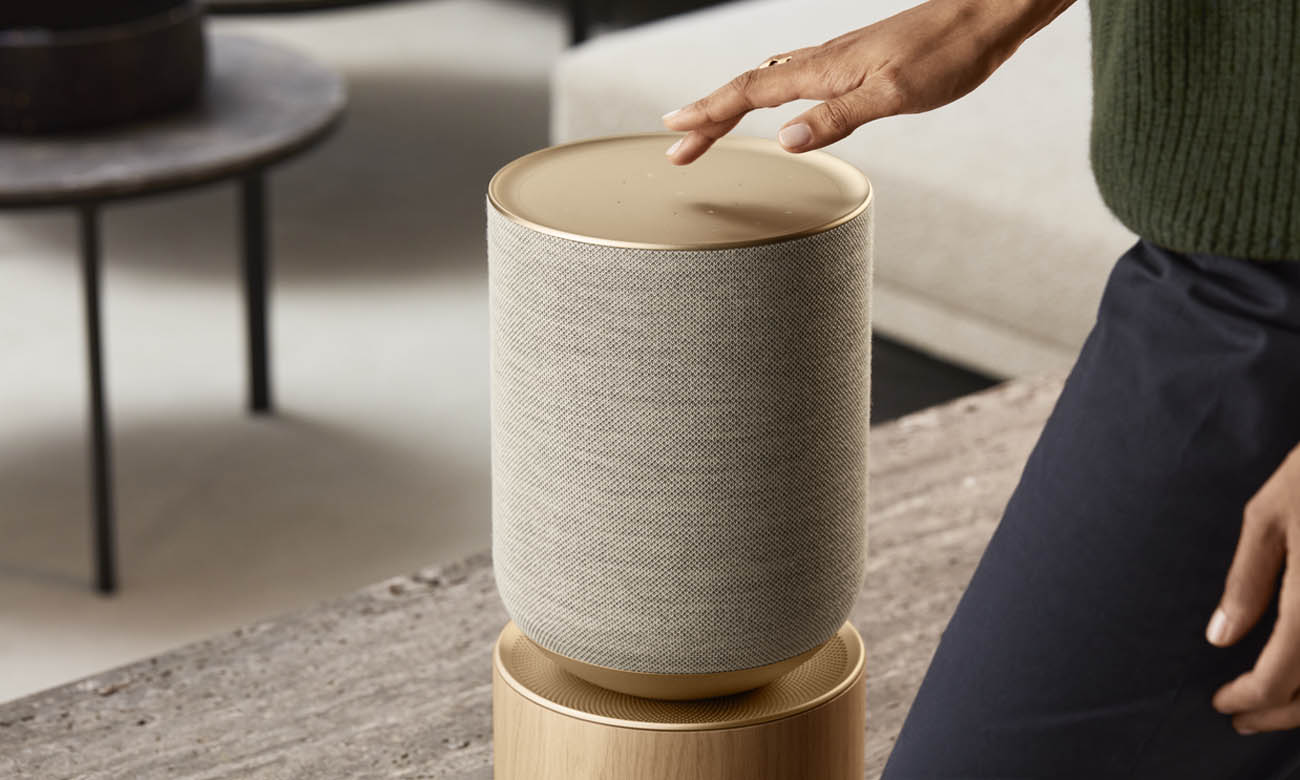 The portable radio became the direct link to create with the name Beolit smart speakers covered in fabric, which B&O now offers with other names increasingly advanced and larger.
The portable radio became the direct link to create with the name Beolit smart speakers covered in fabric, which B&O now offers with other names increasingly advanced and larger. 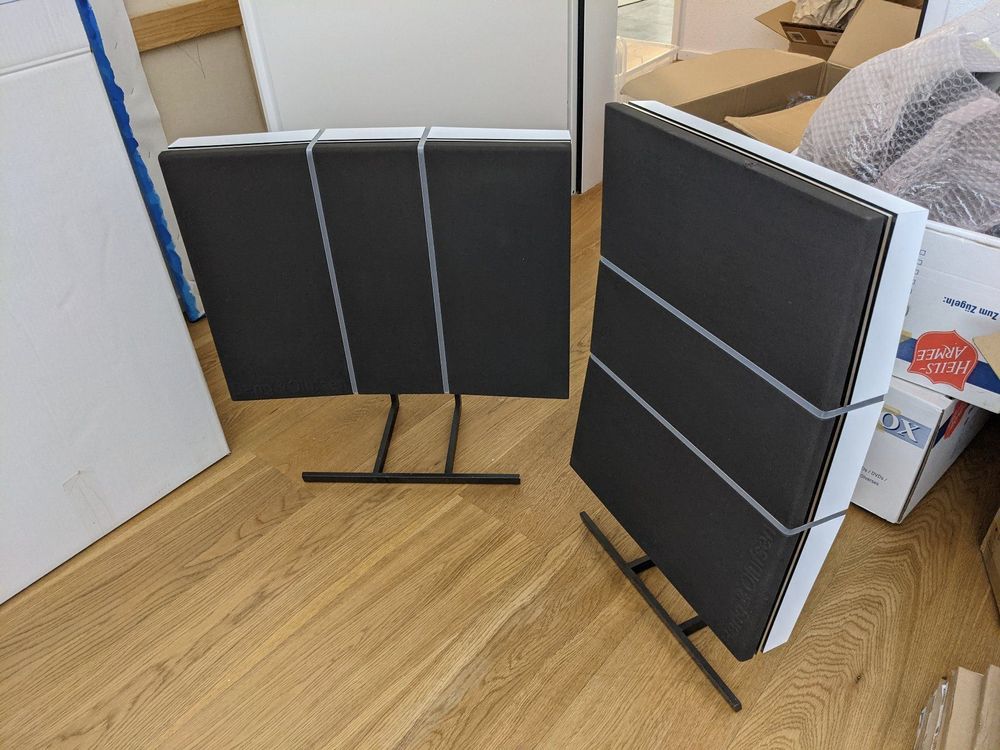

Various design forms with PC4uMusic configuration were presented at the AmberExpo stand. One PC had no case. It was created in collaboration with Swedish artist Per Dahlberg. Another had a wooden case, like a high-end hi-fi amplifier.

The transparent plexiglass PC was created in collaboration with Gigabyte and featured their latest motherboard with an advanced sound section, which was galvanically isolated.
The next PC4uMusic presentation involved Sonab orthoacoustic speakers, which were covered in Italian Gottio fabric to match the home’s Gustavian-style furniture.
Another with traditional speakers and the upholstery better integrated them with the furniture in the music lover's room.
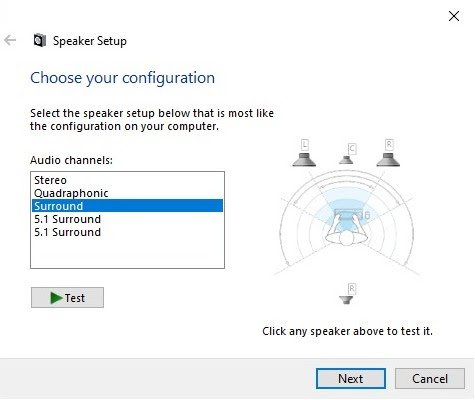
The PC4uMusic configuration allows you to deliver a signal to four speakers in the room, and Microsoft's new proposal with their arrangement works well with ambiophonics, quadraphonics and Home Theater
The permanent exhibition in the art gallery presented the PC4uMusic configuration in HTPC case.






A home theater PC (HTPC) or media center computer is a convergent device that combines some or all the capabilities of a personal computer with a software application that focuses on video, photo, audio playback, and sometimes video recording functionality. Since the mid-2000s, other types of consumer electronics, including game consoles and dedicated media devices, have crossed over to manage video and music content. The term "media center" also refers to specialized application software designed to run on standard personal computers.
ReplyDeletehttps://en.wikipedia.org/wiki/Home_theater_PC
In October 2018 Pspatial Audio introduced software decoding of CD-4/Quadradisc recordings without the need of a specialized hardware demodulator. This technology was introduced with version 3.1.8 of the Stereo Lab software package
ReplyDeletehttps://pspatialaudio.com/
In 1932, a radiogramphone 5 RGS was launched following the BAUHAUS doctrine of simple lines and no superfluous decorations. Upon its appearance, this radiogramophone was criticized by, among others, Professor Ole Wanscher at the Academy of Fine Arts in Copenhagen, who stated: that it had absolutely nothing to do with BAUHAUS: "Making the radio apparatus slide nobly in anywhere is easily achieved with the help of Caucasian distress and Badger legs, or Chinese Funkis - like a theater decoration designed by the furniture dealer's youngest apprentice."
ReplyDeleteThe reaction to this criticism was expressed in the Hyperbo 5 RG Staal, where the inspiration was drawn from one of the most significant BAUHAUS products: the "Cesca chair" designed by Marcel Breuer in 1928. You can see clear inspiration in the choice of materials and the design of simple lines in chrome-plated steel and chrome-plated steel and black lacquered wood. Hyperbo 5 RG Staal was not a sales success, less than 40 copies were produced.
VHS Hi-Fi was added around 1984, https://en.wikipedia.org/wiki/VHS#Hi-Fi_audio_system
ReplyDeleteThe first wire recorder was invented in 1898 by Danish engineer Valdemar Poulsen, who gave his product the trade name Telegraphone.
ReplyDeleteThe peak of wire recording lasted from approximately 1946 to 1954.
Magnetic wire recording was replaced by magnetic tape recording by the 1950s, but devices employing one or the other of these media had been more or less simultaneously under development for many years before either came into widespread use. The principles and electronics involved are nearly identical.
https://en.wikipedia.org/wiki/Wire_recording
tangietial arm - Linear tracking
ReplyDeleteEarly developments in linear turntables were from Rek-O-Kut (portable lathe/phonograph) and Ortho-Sonic in the 1950s, and Acoustical in the early 1960s. These were eclipsed by more successful implementations of the concept from the late 1960s through the early 1980s.
https://en.wikipedia.org/wiki/Phonograph#Linear_tracking
Radial (or, linear-tracking) tonearms
Deletehttps://pspatialaudio.com/radial_tonearms.htm
Example Forsell Air Reference Tangential Air Bearing Turntable
Deletehttps://www.ebay.pl/itm/295826207540
What really set the Beogram 4000 apart though was the arm. Actually it had two, both of which were moved under the control of an electronic analogue servo, at a tangent of a fixed angular relationship to the record, keeping the pickup at the same angle to the groove as the cutter would have been at when the master was cut. This system was known as tangential tracking, and remained in use with minor updates until the last B&O’'s last turntable, the Beogram 7000. The system had many advantages, including that it enabled the arm to be made very short and stiff, a great benefit. The use of dynamic balancing removed the need for a counterweight, and “optimum pivot point” (OPP) suspension was employed, making the arm shorter still.
Deletehttps://beocentral.com/beogram4000
The idea behind Beovox Red Line speakers was one of flexibility. A Red Line speaker was so flexible that it could be placed anywhere. On the ceiling, the wall, or on the floor.
ReplyDeletehttps://beoworld.org/beovox-rl-45/
BeoVox RL 60.2 Product Specification
DeleteWeight 8.3 kg
Long-term max. input power 75 W
Maximum noise power 45 W
Speaker impedance 8 ohms
Frequency range 42 – 20,000 Hz
Power at 96 dB SPL 2 watts
Sensitivity 1 W 93 dB
Distortion < 0.5 %
Cabinet principle: Bass Reflex
Woofer: 2 x 13cm
Tweeter: 2.5cm
Crossover frequency 350 Hz
Net volume 19 litre
https://beoworld.org/beovox-rl-60-2/
Unique vinyl recordings from CD-4 can be digitized with BeoMaster 6000 to a 4-channel file, but connecting it is a bit difficult because the manufacturer had a strong vision of integrating its equipment, and in this case BeoMaster 6000 was intended to handle it.
ReplyDeleteThe manufacturer in the archived description of the MMC 6000 cartridge only states:
DeleteMulti-radial stylus of the Pramanik profile, and at the time the top of the B&O pickup range.
The cut is similar to Shibata, which is discussed in the 4 Channel Record and Shibata Stylus
https://orbray.com/magazine_en/archives/223